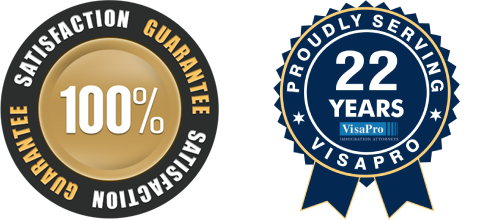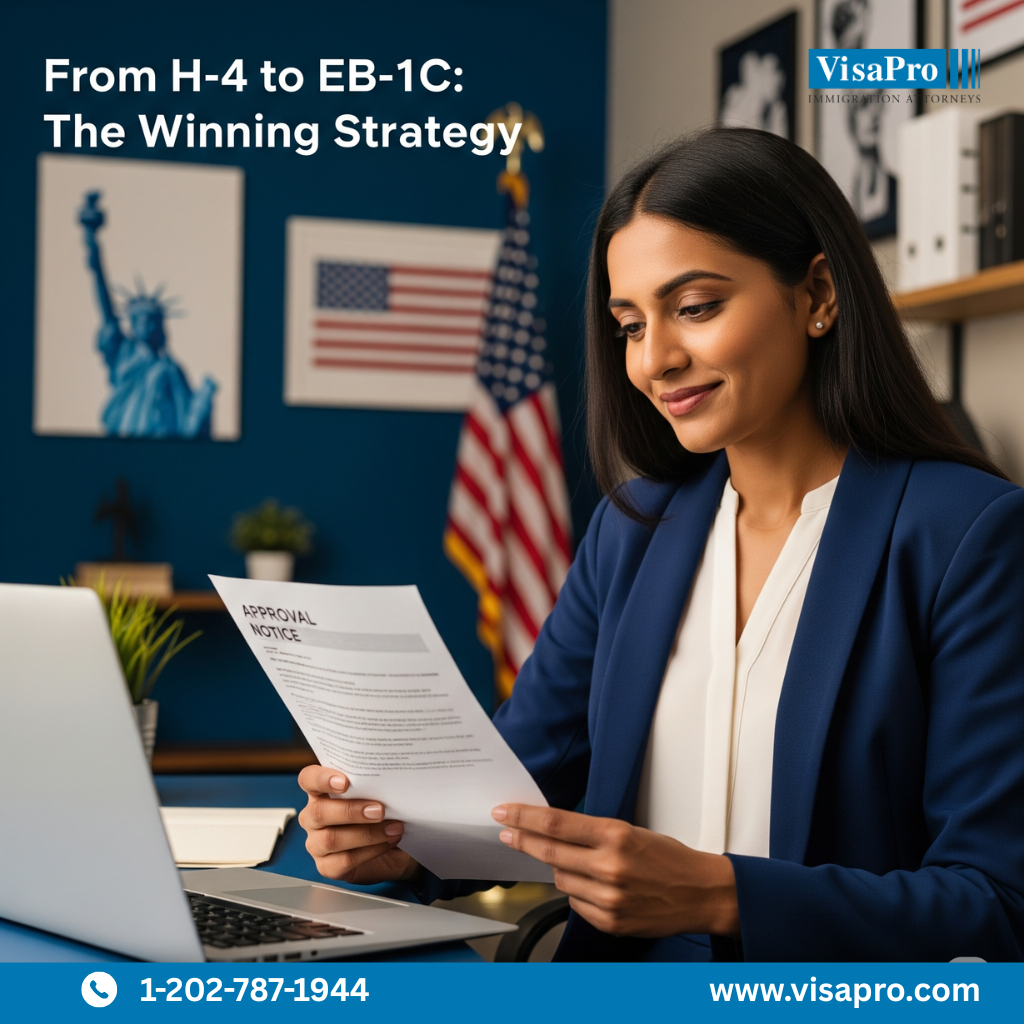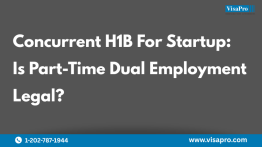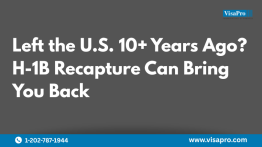Quick Summary:
If you’re stuck in endless green card wait times on an H-1B, you’re not alone- especially if you’re from India or China. But there’s a smarter path forward. This article reveals how one skilled professional on H-1B status and another on H-4 status turned the tables by returning to India for 1 year, re-entering on an L-1A, and fast-tracking a green card through the EB-1C category, bypassing the backlog entirely. You can, too.
Understanding The L-1A To EB-1C Path: A Real Way Out Of The EB-2/EB-3 Backlog
Direct Answer:
Indian and Chinese nationals stuck in long EB-2/EB-3-based green card queues can often qualify for a much faster EB-1C green card by applying as a multinational executive or manager.
Expanded Insight:
Most H-1B workers from India and China wait 10+ years for green cards after filing in the EB-2 or EB-3 category. But the EB-1C category, meant for multinational executives and managers, typically remains current or far less backlogged. The trick? You must have worked abroad for at least one year in a managerial or executive role and then enter the U.S. to qualify.
We’ll break down how this strategy worked for one Indian national, and how it could work for you, too.

Can You Go From H-1B To L-1A To EB-1C?
Direct Answer:
Yes, it’s possible to go from H-1B to L-1A and then EB-1C, but you must first work outside the U.S. for one full year in a qualifying executive or managerial position before applying for L-1A.
Expanded Insight:
This path is gaining popularity among Indian and Chinese professionals facing H-1B and I-140 stagnation. Here’s how it works:
- Step 1: Return Abroad: You must work for at least 1 continuous year outside the U.S. for a company that has or will have a U.S. office in a managerial or executive capacity
- Step 2: Secure L-1A Visa: After one year, the company can transfer you to its U.S. office under the L-1A visa as a manager or executive.
- Step 3: File for EB-1C: Once in the U.S. on L-1A, you can file for the EB-1C green card, often with faster processing and no backlog.
Case Tip: If you have an approved I-140 with a backlogged priority date, you may be able to return to the U.S. in H-1B status and move straight to the EB-1C. This strategy from H-1B to EB-1C is legally viable and often faster overall.
What Is The EB-1C Green Card And Why Is It Faster?
Direct Answer:
EB-1C is an employment-based immigrant category for multinational executives and managers. It typically has shorter wait times and does not require labor certification.
Expanded Insight:
The EB-1C category is often underutilized because most assume it’s only for C-suite execs at Fortune 500s. Not true.
To qualify, you need:
- A qualifying employer abroad and in the U.S.
- One year of qualifying managerial or executive experience abroad in the past three years
- A U.S. position in a management or executive capacity
Why It’s Faster:
EB-1C green cards are current for many countries and only mildly backlogged for India or China compared to EB-2 or EB-3. No PERM labor certification is required, which also cuts down processing time significantly.

H-1B To EB-1C: Why More Indian and Chinese Professionals Are Switching
Direct Answer:
Many professionals are choosing the H-1B to L-1A to EB-1C green card route because it bypasses the 10+ year wait common in H-1B to EB-2 or EB-3 cases for those born in India and China.
Expanded Insight:
If you’re wondering whether it’s worth leaving the U.S. for a year to qualify for this route, the answer for many is a resounding “yes.”
Compare timelines:
- H-1B to EB-2/EB-3 Green Card (India): Often 12+ years
- H-1B to EB-2/EB-3 Green Card (China): Often 3-5 years
- H-1B to L1A to EB-1C Green Card (India): As little as 3-5 years
- H-1B to L1A to EB-1C Green Card (China): As little as 1-3 years
Even better, EB-1C offers the added perk of premium processing, leading to faster adjudication.
Checklist for Eligibility:
- Experience managing people, budgets, or a function
- Opportunity to work abroad for 1 year
- Company willing to support L-1A transfer
- Plans for a U.S. office or existing operations
EB-1C Challenges To Plan For, and How To Overcome Them
Direct Answer:
The H-1B to L-1A to EB-1C green card strategy requires strong documentation and employer support, but the hurdles can be overcome with proper legal guidance.
Expanded Insight:
Common hurdles include:
- Proving Executive or Managerial Role: You must show you were managing staff or a key function, not just doing technical work or were not responsible for non-executive tasks
- Company Setup in U.S.: For start-ups, the U.S. office must be legitimate and operational.
- Timing the Return Abroad: Some worry about losing H-1B status or disrupting family life. But strategic planning (e.g., spouse staying in the U.S. on H-1B) can minimize the disruption.
Real Life Tip: We’ve helped clients establish new U.S. entities even with modest foreign operations. VisaPro can advise how to structure and document this effectively.
The Case: From H-4 Dependent To EB-1C Green Card Holder
Direct Answer:
An Indian national, initially in the U.S. on H-4, returned to India to gain the necessary one year of overseas experience, re-entered in L-1A status, and successfully transitioned to an EB-1C green card.
Expanded Insight:
Let’s walk through the case:
- Background: Our client was in the U.S. as an H-4 dependent, with strong professional qualifications and managerial experience back in India. Her spouse had an approved I-140 but their family was looking at over a decade of waiting under the EB-2 India quota.
- The Strategy: Instead of waiting passively, she returned to India and rejoined her former employer in a qualifying managerial position. After completing the required one year abroad, we helped the company establish a U.S. branch, allowing her to re-enter on an L-1A visa.
- The Result: 1 year after entering the U.S. in L-1A status, we filed her EB-1C petition. It was approved swiftly, without the backlog, and she adjusted to permanent residence.
This case showcases how even H-4 dependents can transform their immigration journey by planning strategically.
Frequently Asked Questions (FAQ)
1.Can I really go from H1B to L1A to EB1?
Yes, if you spend one year working for a qualifying employer abroad in a managerial role, you can re-enter L-1A and pursue an EB-1C green card. This route is increasingly popular for those facing H-1B bottlenecks.
2.How long does H1B to EB1C green card take compared to EB2 or EB3?
While EB-2/EB-3 can take over a decade for Indian nationals, EB-1C green cards can be approved within 3-5 years if the case is properly prepared and the applicant qualifies.
3.Do I have to convert from H1B to L1A if I have an approved I-140?
Many applicants successfully switch from H-1B to L-1A even after I-140 approval but it’s not required. Applicants can return to the U.S. after one year utilizing the H-1B as long as the job is a specialty occupation.
The original priority date of the I-140 can also be ported to the EB-1C petition, accelerating the process.
4.Does my company need to be large to qualify for L1A and/or EB1C?
No. Even small or mid-sized companies can qualify, as long as they have a legitimate business structure, international operations, and the ability to support a managerial or executive role in the U.S.
5.Is H1B to EB1 green card faster than staying on H1B and waiting?
Absolutely. The H-1B to EB-1C green card route can bypass the wait entirely for eligible candidates, especially from India and China. It’s often the only viable fast-track option.
Feeling stuck in green card limbo?
Let VisaPro guide you. We’ve helped countless Indian and Chinese professionals find their fastest path to a green card, even when the odds seemed impossible.
👉 Schedule your Free Visa Strategy Session with VisaPro today.
You deserve peace of mind. Let’s make it happen.
What VisaPro Customers Are Saying
The US [B-1] Visa has always been a tough ride, and being denied a few times it makes it even worse. But thanks to VisaPro and their meticulous processing I was granted a Visa. I would like to thank you and all the people involved in making this a success. I would like to recommend VisaPro to all those who seek peace of mind and hassle free Visa processing.”



 Manas Bhat, Director Operations, First Houston Mortgage India
Manas Bhat, Director Operations, First Houston Mortgage India



